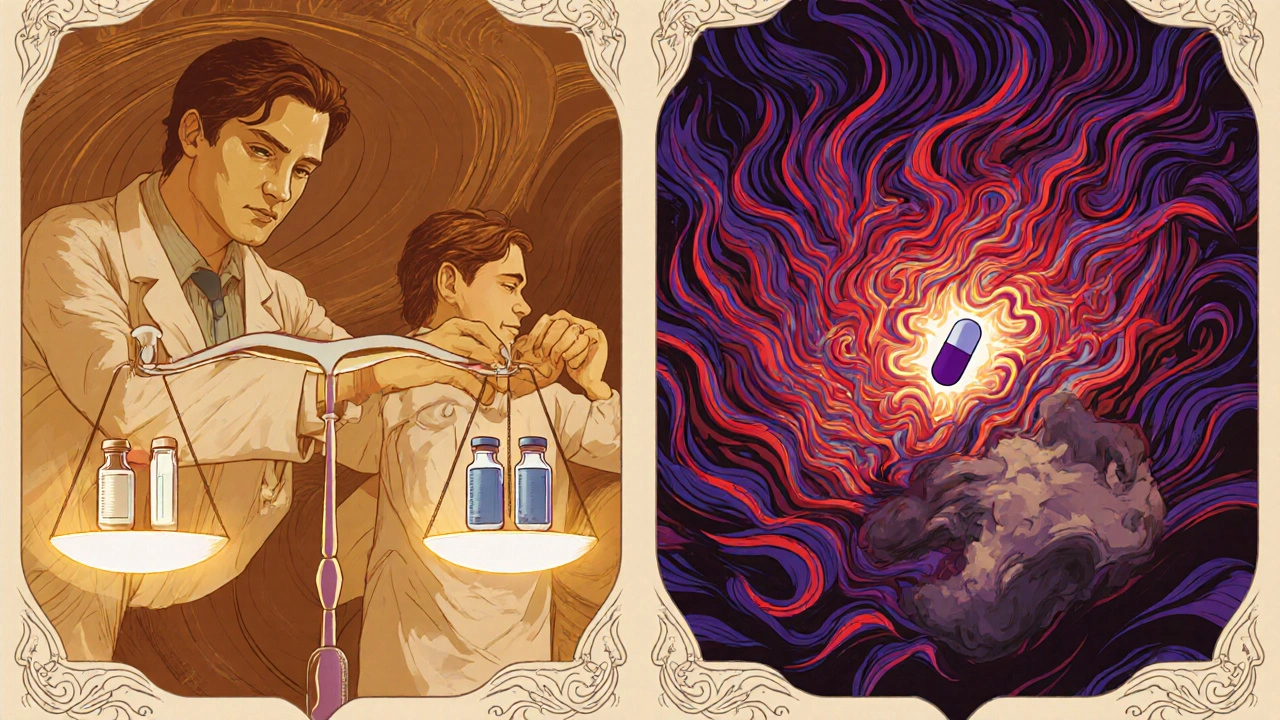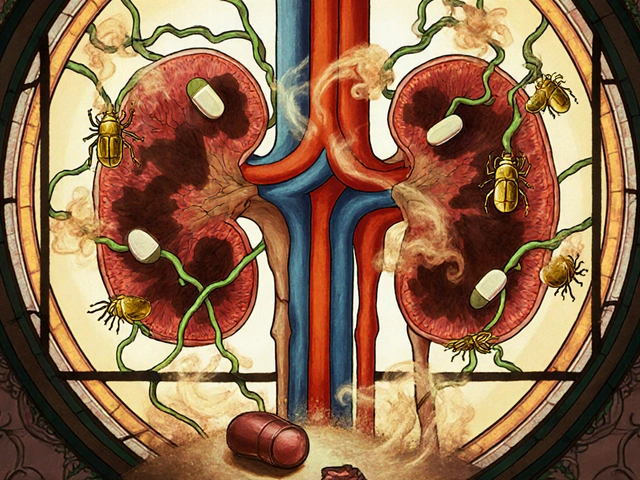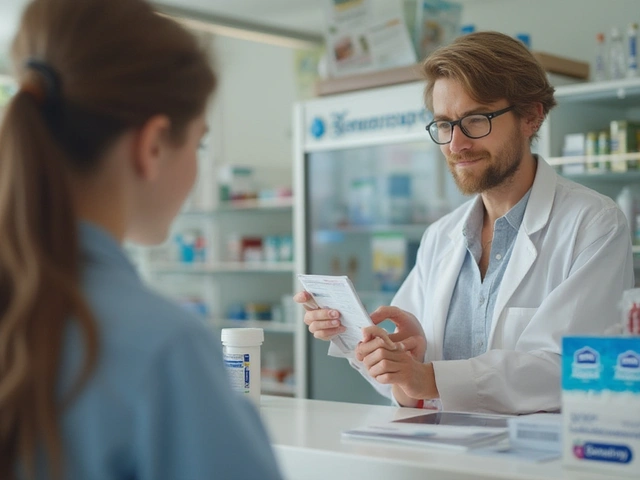Side Effect Risk Calculator
Your Medication Risk Assessment
This tool helps you understand your risk of dose-related vs non-dose-related side effects based on your current medications and health factors. Results are based on medical guidelines for common medications.
Your Risk Assessment Results
Dose-Related Side Effect Risk
Non-Dose-Related Side Effect Risk
Personalized Recommendations
When you take a medication, you expect it to help. But sometimes, it causes harm. Not all side effects are the same. Some happen because you took too much. Others happen for reasons you can’t predict-even at the lowest dose. Understanding the difference between dose-related and non-dose-related side effects isn’t just for doctors. It’s critical for anyone taking medication long-term, especially older adults or people on multiple drugs.
What Are Dose-Related Side Effects?
Dose-related side effects, also called Type A reactions, are the most common. They make sense. They’re just an extension of how the drug works in your body. If a drug lowers blood pressure, too much of it can drop it too low. If it lowers blood sugar, too much can cause fainting or seizures. These reactions follow the law of mass action: more drug = stronger effect.
They’re predictable. If you know the drug’s purpose, you can guess its side effects. For example:
- Insulin can cause low blood sugar-especially if you skip a meal or take too much.
- Warfarin, a blood thinner, can cause dangerous bleeding if your INR goes above 4.0.
- Metformin, used for diabetes, can cause diarrhea if the dose is too high.
- Lithium, for bipolar disorder, becomes toxic if levels go above 1.2 mmol/L-just a little over the therapeutic range.
These reactions account for 70-80% of all adverse drug reactions. They’re also behind most hospital visits for medication problems. In adults over 65, drugs like anticoagulants, insulin, and antiplatelets cause nearly two-thirds of all emergency visits due to side effects.
What makes these reactions dangerous isn’t the drug itself-it’s the narrow window between the right dose and the toxic one. Drugs like digoxin, lithium, and vancomycin have a therapeutic index under 3. That means the difference between helping and harming is small. A kidney that’s not working well, a drug interaction, or even just aging can push you over the edge.
What Are Non-Dose-Related Side Effects?
Non-dose-related side effects, or Type B reactions, are the scary ones. They’re unpredictable. They don’t make sense based on how the drug is supposed to work. You can take one pill and get a life-threatening rash. Another person takes ten and feels fine.
These reactions are immune-driven or idiosyncratic. That means your body’s defense system reacts in a way it shouldn’t. They’re rare-only 15-20% of all side effects-but they cause 70-80% of serious, life-threatening reactions. And they’re the main reason drugs get pulled from the market.
Examples include:
- Anaphylaxis from penicillin-even after years of safe use.
- Stevens-Johnson syndrome from lamotrigine or sulfonamides, where the skin and mucous membranes start to peel off.
- Drug-induced liver injury from amoxicillin-clavulanate, which can cause sudden, severe liver failure.
- Abacavir hypersensitivity in HIV patients, which can be fatal if you keep taking it.
What’s strange is that these reactions often happen after prior exposure. Your immune system gets sensitized-like an allergy-and then reacts violently the next time. Sometimes, it happens on the very first dose if you were exposed before, maybe through a relative’s medication or an environmental trigger.
Why Do Non-Dose-Related Reactions Even Exist?
At first glance, this doesn’t make sense. If all drugs work by binding to targets in your body, shouldn’t more drug = more effect? The answer lies in individual biology.
Experts like Aronson and Ferner found four reasons why these reactions seem dose-independent:
- It’s not real. Sometimes, the reaction is misdiagnosed. The timing is off. The symptoms are from another cause.
- Hypersusceptibility. Some people reach the maximum effect at a tiny dose. Beyond that, adding more drug doesn’t make it worse-but the damage is already done.
- Wide variation. People are wildly different. One person’s safe dose is another’s poison. Genetics, age, liver health, and immune history all play a role.
- Measurement errors. We don’t always know how much drug actually reached the target. Poor absorption, vomiting, or interactions can make dosing unreliable.
So even though these reactions appear random, they’re not truly dose-free. They just have thresholds so unpredictable that they look that way in population studies.

Who’s at Risk?
Dose-related reactions hit people with:
- Reduced kidney or liver function (e.g., elderly, chronic kidney disease)
- Drug interactions (e.g., clarithromycin boosting statin levels 5-10x)
- Genetic differences in drug metabolism (e.g., CYP2C9 variants affecting warfarin)
Non-dose-related reactions are tied to:
- Specific genes (e.g., HLA-B*57:01 for abacavir, HLA-B*15:02 for carbamazepine)
- History of allergies or autoimmune conditions
- Certain ethnic backgrounds (e.g., HLA-B*15:02 is common in Southeast Asians)
For abacavir, testing for HLA-B*57:01 before prescribing reduces hypersensitivity from 5-8% to less than 0.5%. The test costs $150-$300-but it’s cheaper than a hospital stay.
How Are They Managed?
For dose-related reactions, the fix is simple: adjust the dose.
- Monitor drug levels: Check vancomycin troughs, digoxin levels, lithium concentrations.
- Reduce doses for kidney or liver problems.
- Use therapeutic drug monitoring (TDM) for drugs with narrow windows.
For non-dose-related reactions, the only safe move is to stop the drug-forever.
- Never rechallenge. If you had Stevens-Johnson syndrome from lamotrigine, you’ll likely get it again-even with a tiny dose.
- Screen before prescribing. HLA-B*15:02 testing before carbamazepine is now standard in many countries.
- Use skin tests for penicillin allergies. A negative test lets 90% of people safely take penicillin again.
One study found that hospitals using structured protocols for Type A reactions cut major bleeding in warfarin patients by 35%. That’s thousands of preventable hospitalizations every year.

The Bigger Picture
This isn’t just theory. It’s shaping medicine today.
The FDA now includes pharmacogenomic info in 311 drug labels. For 28 of them, genetic testing is required. The global pharmacogenomics market is set to hit $18 billion by 2030. Why? Because we’re learning how to prevent harm before it happens.
Machine learning models can predict dose-related reactions with 82% accuracy. But for non-dose-related? Only 63%. That’s because Type B reactions are still a mystery. They depend on your unique immune system, your genes, your history-factors we’re still mapping.
Regulators are also pushing harder. The EMA now distinguishes between ‘dose-independent’ and ‘dose-unrelated’ reactions, recognizing that some Type B reactions may have thresholds-we just don’t know them yet.
What Should You Do?
If you’re on medication:
- Know your drugs. Ask your pharmacist: “Is this one of those that needs blood tests?”
- Report rashes, fever, swelling, or sudden organ problems-even if you think it’s “just a side effect.”
- Ask about genetic testing if you’re prescribed abacavir, carbamazepine, or certain cancer drugs.
- Carry a list of all your medications and any past reactions. Don’t assume “it’s fine this time.”
If you’ve had a serious reaction, get it documented. Ask for an allergy card or a medical alert bracelet. Some reactions, like anaphylaxis to penicillin, can be fatal on re-exposure-even years later.
The bottom line: dose-related side effects are about quantity. Non-dose-related are about identity. One can be managed. The other must be avoided.
Why This Matters for Everyday Life
Most people think side effects are just “how the medicine works.” But the truth is, your body’s reaction to a drug is deeply personal. Two people take the same pill, same dose, same doctor’s advice-and one gets fine, the other ends up in ICU.
That’s not bad luck. That’s biology. And now, we’re getting better at reading it.
When you understand the difference between a dose-related reaction and a non-dose-related one, you’re not just informed-you’re empowered. You can ask the right questions. You can spot the warning signs. And you can help prevent a reaction before it happens.







Amber O'Sullivan
November 4, 2025 AT 13:42So basically if you take a pill and your skin starts peeling off it's not because you took too much it's just your body being dramatic like a soap opera
William Priest
November 5, 2025 AT 07:51lol who even uses the term 'therapeutic index' anymore? i mean its cool and all but like if you need a whole paragraph to explain why your med is dangerous maybe you should just not take it
Rashmi Mohapatra
November 7, 2025 AT 00:08in india we just take whatever the doctor gives and pray to god no one dies from side effects
Ryan Masuga
November 7, 2025 AT 14:44really appreciate this breakdown i used to think all side effects were just bad luck now i get why some people react so differently
Cris Ceceris
November 8, 2025 AT 15:44what fascinates me is how biology turns medicine into a personal puzzle. two people same pill same dose one walks away fine the other ends up in the er. its not about quantity its about identity like the post says. your genes your immune history your liver your luck all weave together in ways we barely understand. we think we control medicine but really we're just guests in a system that was never designed for us
Clyde Verdin Jr
November 8, 2025 AT 16:47THIS IS THE MOST RIDICULOUS THING I'VE READ ALL WEEK. YOU THINK WE NEED A WHOLE ESSAY TO TELL US THAT TOO MUCH DRUG = BAD AND WEIRD REACTIONS = BAD? I MEAN COME ON. I TOOK IBUPROFEN ONCE AND GOT A RASH. WAS IT DOSE RELATED OR NON DOSE RELATED? WHO CARES. I STOPPED TAKING IT. THAT'S IT. NO LABS NO GENES NO 18 BILLION DOLLAR MARKET JUST STOP TAKING THE DAMN THING
Jennifer Bedrosian
November 9, 2025 AT 02:06okay but like imagine being the person who got Stevens Johnson from a simple antibiotic and then your whole life you have to avoid every single drug ever made
Lashonda Rene
November 9, 2025 AT 03:20yeah i know someone who had that happen to them and now they carry a card and wear a bracelet and every time they go to the hospital they have to explain it all over again and honestly its so scary because what if they forget to mention it one time and then boom it happens again and you cant even blame them because they just want to feel better and take a pill but then their body betrays them like its not even their body anymore its like a hostile alien
Abigail Chrisma
November 10, 2025 AT 05:45thank you for writing this. i work with elderly patients and i see dose-related reactions every day. but i also saw a woman react to a patch she'd used for years without issue. her skin blistered. no overdose. no interaction. just her immune system flipping a switch. we need more awareness not just among doctors but among families. i give this info to caregivers all the time now
Ankit Yadav
November 11, 2025 AT 09:25in india we dont have access to genetic testing for most people so we rely on clinical observation and experience. still its good to know what we are missing. maybe one day we can offer this to everyone not just those who can afford it
Key Davis
November 11, 2025 AT 14:24Thank you for presenting this complex topic with clarity and precision. The distinction between Type A and Type B reactions is not merely academic; it is a cornerstone of patient safety. The emphasis on pharmacogenomic screening and structured protocols represents a paradigm shift toward individualized medicine. I commend the integration of empirical data with clinical pragmatism. This is the standard to which all medical communication should aspire.
Andy Slack
November 12, 2025 AT 07:47Just took my lithium today. Hope my kidneys are having a good day. 🙏